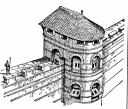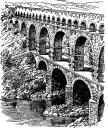We have spent our holidays in the South of France almost every summer the last fifteen years. Many will ask, why the South of France is so fascinating, that you go there over and over again? That we can't explain for sure - but mainly the size of the region by itself, makes it impossible to experience and explore it all in just one summer. Secondly the variety of experiences are so overwhelming that you get all what a summer vacation takes in just one place!
Nature and landscapes are very alternating. You meet territories with huge mountains, old volcanic territories, plains, rough landscapes and fertile fields. You meet rivers and lakes - forests and tempting beaches. All over you find wide open wine fields, fields with blue lavender and yellow sun flowers and a lot more.


You pass through small idyllic villages, where time seems to have stopped and in the greater cities you'll find worth seeing buildings, museums and excellent restaurants.
Our favorite area in the South of France is Languedoc/Roussillon or to be more exact the area around a village named Vias. From there you have only a stone's throw to the Mediterranean and at the same time you are within an operating range to sights of high class.



